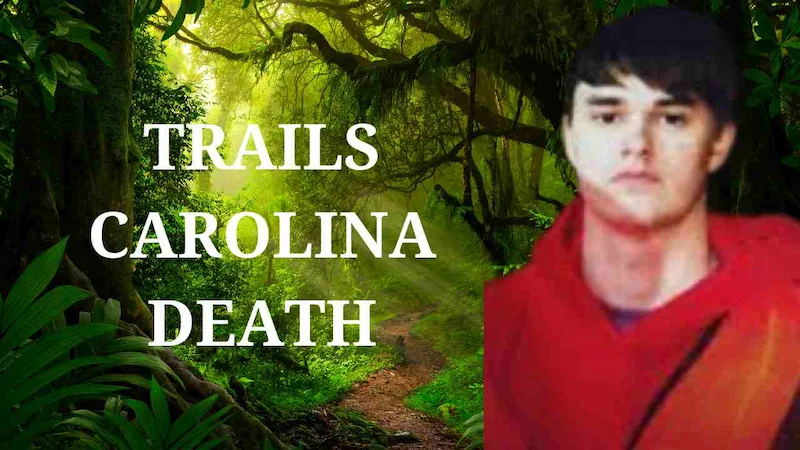Introduction
In the serene landscapes of Western North Carolina, the recent discovery of Alec Lansing’s remains has cast a somber light on the safety of wilderness therapy programs. This article delves into the circumstances surrounding Lansing’s disappearance from Trails Carolina on November 10 and the ensuing concerns regarding the safety of participants in such programs.
Alec Lansing’s Disappearance
The mystery surrounding Lansing’s departure from Trails Carolina on that fateful day raises questions about the unique challenges faced by individuals in intensive wilderness therapy programs. The undisclosed motives behind his actions shed light on the impulsive choices that participants may make in these immersive environments.
Surveillance System Glitches
The pivotal moment when Lansing was sighted by a convenience store clerk, miles away from the camp, unveils a critical aspect of the tragedy. Technical glitches in the surveillance system significantly delayed verification, underscoring the importance of reliable emergency infrastructure in cases involving missing persons. This unfortunate delay hampered crucial search and rescue operations.
Challenges in Wilderness Searches
As exhaustive search efforts unfolded, collaboration with state authorities and voluntary search parties showcased the difficulties of locating individuals in vast wilderness areas. The challenges encountered in the search process highlight the urgency of finding more effective methods to locate participants in a timely manner within expansive and rugged terrains.
Risks in Wilderness Environments
The conclusion to Lansing’s journey, marked by the discovery of his body in a stream, points towards the inherent risks individuals face when navigating the wilderness alone. The suspicion that he fell from a tree, breaking his hip and becoming immobilized, serves as a poignant reminder of the potential dangers in such environments.
You may like – Chrisley Knows Best Daughter Dies: What’s The Truth?
Autopsy Results and Hypothermia
The autopsy’s findings, indicating Lansing’s succumbing to hypothermia triggered by prolonged exposure to the cold, underscore the importance of participant preparedness. Despite surviving the fall, Lansing’s injuries left him incapacitated, raising questions about the necessity for thorough training in adverse weather conditions and the ability to handle unforeseen challenges.
Concerns about Wilderness Therapy Participants
Beyond Lansing’s tragedy, broader concerns emerge regarding the preparedness and awareness of participants in wilderness therapy programs. The article advocates for a comprehensive approach to safety, emphasizing the need for individuals to be well-equipped for the challenges posed by the unpredictable nature of the wilderness.
Safety Protocols and Emergency Preparedness
In the wake of Lansing’s demise, the article stresses the imperative for heightened safety protocols and enhanced emergency preparedness within wilderness therapy programs. It calls for a proactive integration of technology into search and rescue operations, aiming to minimize response times and improve the effectiveness of these critical endeavors.
Community Response and Future Prevention
The community’s collective grief over Lansing’s loss becomes a rallying cry for action. As leaders and civil society grapple with the aftermath, there is a resounding call for proactive measures to prevent similar incidents in the future. This tragedy serves as a catalyst for improved safety measures and comprehensive planning within wilderness therapy programs, ensuring the well-being of participants in these transformative experiences.
FAQs
Q: Do wilderness therapy programs pose safety concerns?
A: Participating in wilderness therapy programs introduces unique challenges, and individuals may grapple with unexpected difficulties, leading to impulsive decisions like leaving the program. Ensuring safety is paramount, requiring a collaborative effort between participants and program organizers to prioritize well-being.
Q: What strategies can be employed to improve search and rescue operations in wilderness settings?
A: Improving search and rescue operations in expansive wilderness areas demands reliable surveillance systems and swift response protocols. Investing in advanced technology and providing comprehensive training to search teams are pivotal for augmenting the effectiveness and efficiency of search operations.
Q: What preventative measures can be implemented to avoid future incidents of a similar nature?
A: Mitigating the risk of future incidents involves refining safety procedures within wilderness therapy programs, strengthening emergency preparedness, and educating participants about challenging weather conditions. Collaborative efforts between communities and program organizers are essential to establish and enforce stringent regulations and guidelines, ensuring the safety of participants during these transformative experiences.






